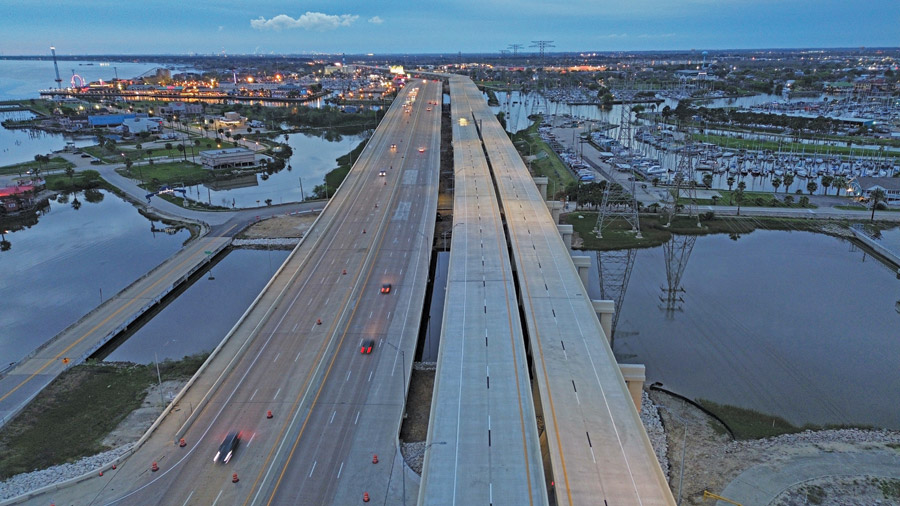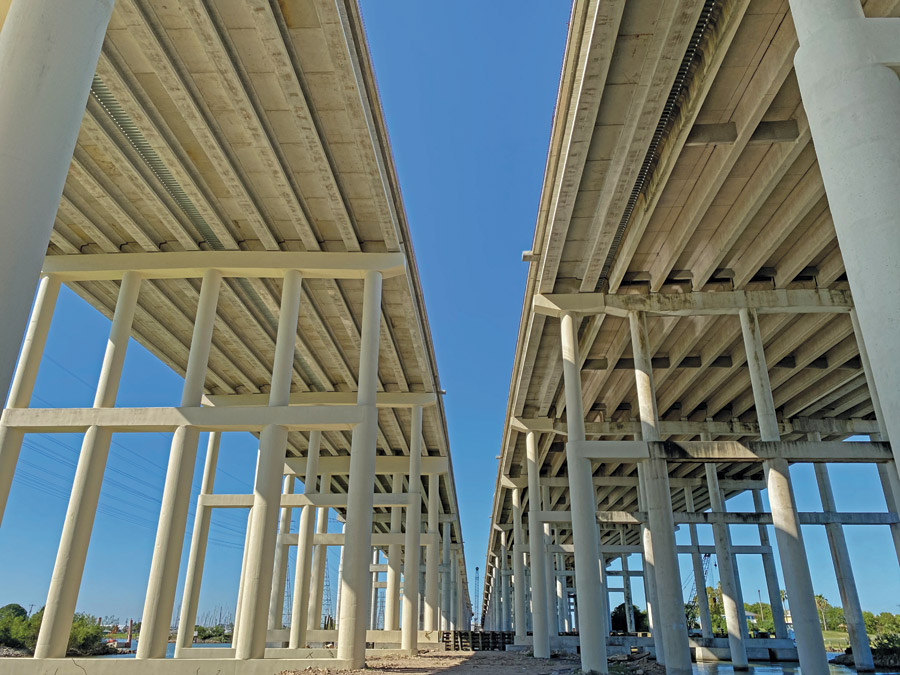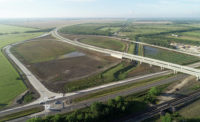2024 Texas & Louisiana Best Projects
Best Highway/Bridge — SH 146 Expansion

Photo courtesy Webber
SH 146 EXPANSION
Kemah and Seabrook, Texas
BEST PROJECT
Submitted by: Webber LLC
OWNER/LEAD DESIGN FIRM Texas Dept. of Transportation
GENERAL CONTRACTOR Webber LLC
SUBCONTRACTORS Franco Builders Inc.; Joslin Construction; RDI Foundation Drilling; Indus Road & Bridge Inc.; Speedy Paving LLC
A four-lane, 116-span bypass express bridge now travels around the cities of Kemah and Seabrook, Texas, while the existing 41-span bridge has been expanded and now features a bike lane.
This $217.6-million project included the reconstruction of State Highway 146 from Red Bluff to SH-96 on the southeast side of Houston.
With work progressing in a high-profile area near the Kemah boardwalk, NASA facilities and the Clear Lake marinas, constant communication was vital between the construction team and all stakeholders.
Constructing the bridge over the active Clear Creek channel—which is home to the second-largest boating community in the U.S.—while allowing efficient use of the channel by the adjacent marinas was another challenge. Because this was the only way to travel in and out of the channel, special attention was required to ensure the safety of boaters as well as construction personnel.

Photo courtesy Webber
Meetings between the U.S. Coast Guard, Texas Dept. of Transportation and Webber produced a traffic management system for use on the water, which was monitored and adjusted based on feedback from the boating community.
The Kemah Bypass bridge required the construction of three elevated spans across the channel as well as the placement of 20,150 linear ft of concrete girders.
Because of the length and weight of the girders, they were delivered to the existing bridge, loaded onto barges that were floated out to the new structure, then Webber used marine cranes to hoist the beams into place.
While widening the existing Kemah bridge with the proposed bike and additional traffic lane, Webber’s pile-driving contractor unexpectedly encountered an underwater obstruction in the Clear Creek Channel.

Photo courtesy Webber
The project team utilized a combination of divers and sonar scanning to identify the obstruction as the foundation from a previously demolished drawbridge. From there, the Webber-led project team coordinated with TxDOT to change the foundations from concrete piles to drilled shafts. Crews then proceeded to install four 78-in.-dia by 124-ft cased drilled shafts through the existing foundations using a sophisticated coring method.
After several months of planning, Webber completed the drilled shafts, thereby significantly mitigating a delay to the project’s completion.
This project was also used as a pilot for electrically isolated tendons (EIT) for the Federal Highway Administration, a first-of-its-kind installation in the U.S. after being used throughout Europe for the past 20 years.
With the EIT system, the encapsulation system is assessed from time of construction through the service life of the bridge by using commercially available inductance/capacitance/resistance (LCR) meters to measure the AC resistance, capacitance and loss factor between the isolated PT strands and the reinforcing steel located in the surrounding bridge structure.
The project was completed on-schedule, in April 2024.



